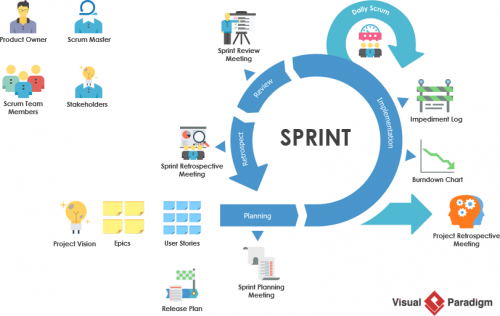Becoming a Certified ScrumMaster
I recently hit my fourth year working for my current company, and when evaluating my goals for the upcoming year, my advisor suggested I look into a non-technical certification – something to help me build my leadership, project management, or people skills. I recently started leading a team of 25+ people, so I figured solidifying some of my soft skills would be beneficial. I took a look at Scrum Alliance’s Certified ScrumMaster (CSM), the Project Management Institute’s Certified Associate in Project Management (CAPM), and the Project Management Institute’s Agile Certified Practitioner (PMI-ACP).
After some research (and deciding I wanted to stay in the technical realm and stay away from the project management path), I settled on the Scrum Alliance Certified ScrumMaster. One of the driving decisions behind choosing this certification was the number of times it was mentioned on job listings and proposal requirements.

And so began my CSM journey. So how does one earn this certification? According to the Scrum Alliance website (https://www.scrumalliance.org/get-certified/scrum-master-track/certified-scrummaster), a candidate is required to take an in-person (or live online, thanks COVID) course taught by a Certified Scrum Trainer, and then take the 50 question exam. On the exam, you need 37 out of 50 to pass, so roughly a 74%.
I signed up for a course, got dressed in my business clothes for the first time in a few weeks, turned on the dreaded front-facing camera, and participated in the training. Two days later, I passed the very easy exam and am now a Certified ScrumMaster.
So, is this worth it? Absolutely.
As someone who spent the past two-plus years on a team that practiced agile and scrum, I thought I had a clear cut understanding of what the framework was and how to best practice it. Boy, was I wrong. I feel as if one of the largest misconceptions about the scrum framework is that a team can (and should) modify the events or artifacts of the framework without actually attempting to leverage the scrum framework in full, first. Often times, as I learned in the course and was able to retrospect on my previous project, key steps are left out of the process because the Scrum Team does not fully understand the reason behind (or the benefits of) a given step. My previous team held sporadic monthly retrospectives, and never held a spring review meeting. We also never leveraged burndown charts to track the team’s work. After the training, it is clear to me how these elements would have benefitted my old development team, increasing productivity and transparency.

As someone who is gearing up to lead a team through a new data architecting development project, I found extreme value in the knowledge I gained from the ScrumMaster training course. Many of my course mates had similar questions as I, and we were able to build off of each other’s experiences to gain a deeper understanding of the framework. Other key things covered in the course that wouldn’t be easy to read from a blog post were how to adopt the framework and how to navigate common pitfalls or impediments.
Anyone can tell you the basic pillars of scrum, but I find myself frequently thinking back to the course and reflecting on the little nuggets of information I got from it. While at first, it may seem like you’re paying for a certification (not paying to take an exam), it is becoming clear to me why the certification is structured in this way.
I would recommend this certification route to anyone who is playing an active role in leading a team through an agile development lifecycle. You will learn how to increase the efficacy and morale of your team, enabling you to become a better leader.

